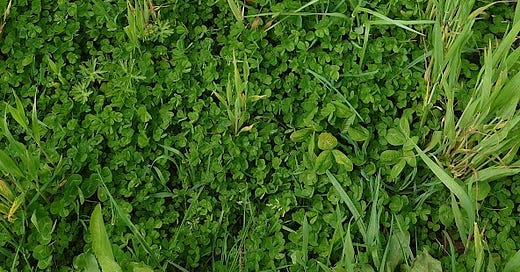Mulching – have you tried a living mulch?
Mulching is so important for increasing resilience in the garden but what about using living plants? Also, I visit Abbey Home Farm near Cirencester & reveal the identity of last week's mystery plant.
Mulching has many benefits. A cover of compost, leaf mold, a product such as Strutch, wool or gravel will all protect the soil and its life from the heat of the sun or the force of rain. It traps the water in the soil and helps to reduce evaporation, while organic mulching materials will boost the soil organic content.
There is one type of mulching that really interests me – living mulches. I first came across this on a tour of Tolhurst Organics near Reading, with organic expert / pioneer Tolly. He grows white clover under crops like courgettes and squash. The clover covers the ground and fixes nitrogen for the hungry crops. Towards the end of the season, the crops will shade the clover, but then they die and the clover grows on over winter. Often an organic grower will leave the clover int he ground for another season, as a fertility building crop.
Arable farmers are trialing living mulches too, as the photo shows. Here white clover is growing under wheat. It’s a trick…





